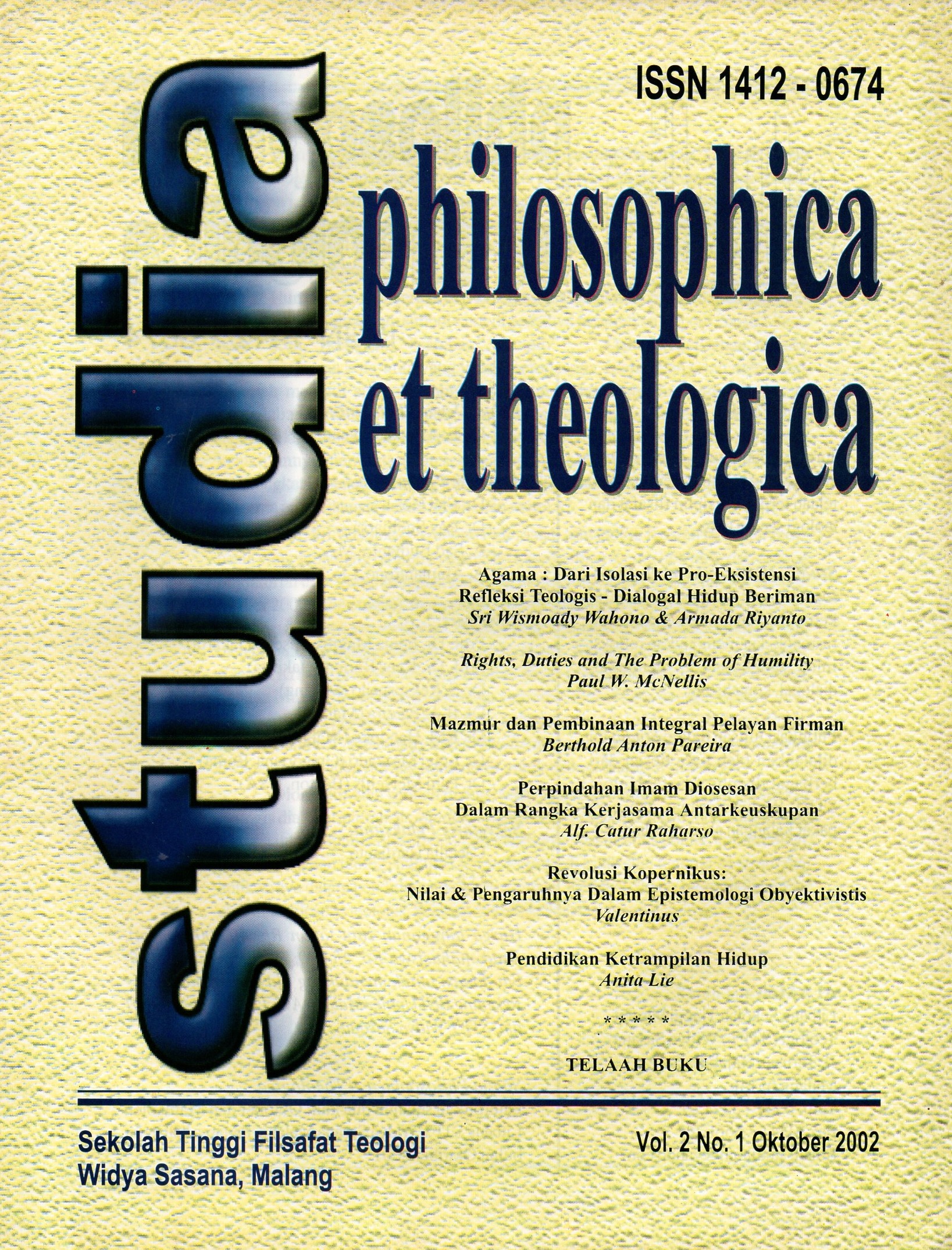MAZMUR DAN PEMBINAAN INTEGRAL PELAYAN FIRMAN
Abstract
There is a general sad observation that the formation of our priestly students is too intellectual to the detriment of its affective element. The students loose the capacity to perceive the things of beauty. How can this situation be remedied? The author of this article is of the opinion that one of the ways out is the study of the Bible as literature and the use of psalms in the atmosphere of beauty. As poetry of christian worship music, chant, oracle, wisdom, prayer, joyful praise and thanks, silence, dance, play, action and architecture are all main elements that make the psalms and therefore should integrated and manifested in their use. Only by then can the students be imbued by their feelings and emotions and be captivated by their beauty. The psalms are a school of integral formation.
References
Eaton John H., The Psalms Come Alive, London: Mowberry, 1984.
Füglister N., Das Psalmengebet, München: Kösel, 1965.
Grün Anselm, Chorgebet und Kontemplation, Munsterschwarzacher Kleinschriften 50; Munsterschwarzach :Vier-Turme-Verlag, 1989.
Harnoncourt Philip, “Möglichkeiten zum Vollzug der Psalmen,” dlm Martin KlöckenerHeinrich Rennings, Lebendiges Stundengebet: Vertiefung und Hilfe, Freiburg/ Basel/Wien: Herder, 1989.
Leclercq J., “The Divine Office and Lectio Divina,” Concilium 159, 9/1982, 34
Nakagawa Shin, Musik dan Kosmos: Sebuah Pengantar Etnomuskologi, Jakarta: Yayasan Obor Indonesia, 2000.
Rudiyanto S. F.X., “Transformasi Arti Sebagai Buah Karya Seni: Percikan Filsafat Arsitektur,” Melintas no. 38 (1996).
Sedhar Sengor, “La poésie de sainte Therese d’Avila,” Carmelus 31(1984).
Wogaman J.Philip, Speaking the Truth in Love: Prophetic Preaching in a Broken World, Louisville: WJK, 1998.
Zhong-qi Cai, “In Quest of Harmony: Plato and Confucius on Poetry,” Philosophy East & West 49,3 (1999).





















